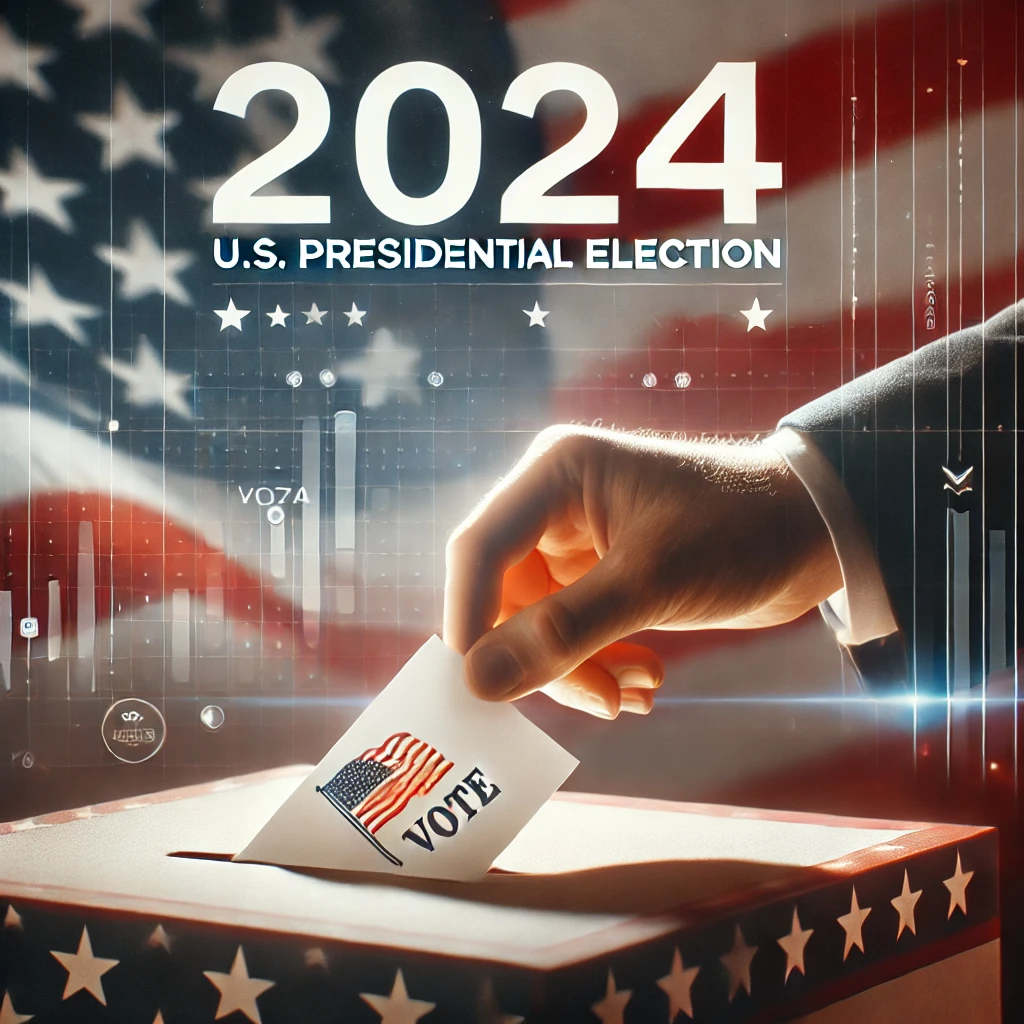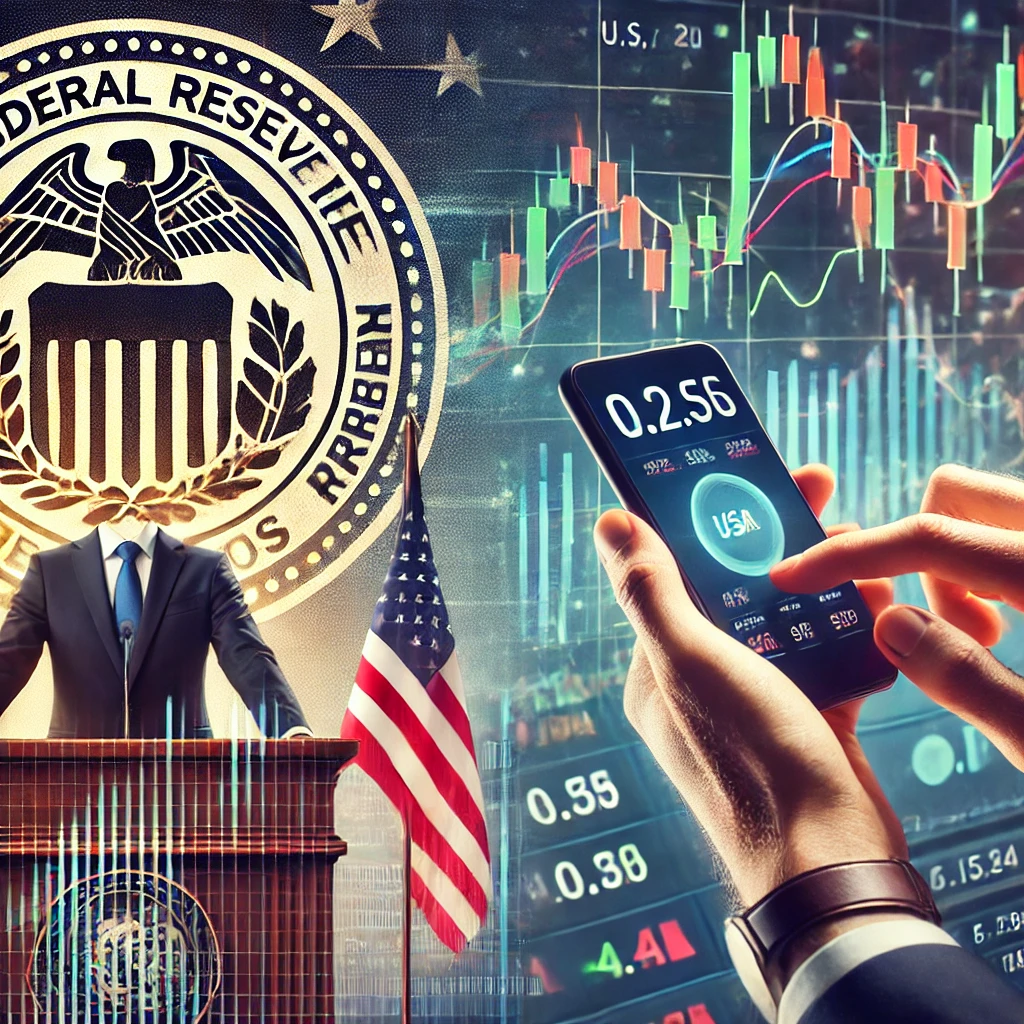
Markets Brace for the 2024 Presidential Election and Federal Reserve Meeting: Essential Insights and Market Strategies
The 2024 U.S. presidential election and the Federal Reserve’s interest rate meeting this week promise to set the stage for notable market fluctuations and volatility. Both events mark a pivotal moment in the financial landscape, drawing global investor attention due to their potential effects on U.S. economic stability, stock trading trends, and sector-specific performance.
Political events like presidential elections have historically influenced the U.S. economy, while the Fed’s monetary policy can sway everything from interest rates to inflation and economic growth. This week, investors are on high alert as they prepare for possible shifts that could impact both short-term trading and long-term investment decisions.
1. The 2024 U.S. Presidential Election and Its Market Implications
The U.S. presidential election, taking place on November 5, is set to be a close contest between Democratic candidate Kamala Harris and Republican candidate Donald Trump. This tight race has heightened market anxiety, as varying policy approaches from each candidate are likely to affect different sectors. From tech regulations to environmental policies, each candidate’s stance introduces potential risks and rewards for certain industries. Historically, presidential elections often lead to market volatility as policies are clarified and market players gauge the likely economic and regulatory environments.

How Presidential Elections Typically Influence Market Behavior
- Political Uncertainty and Market Volatility: The stock market typically experiences heightened volatility around election periods. This year, with closely watched sectors like healthcare, energy, and technology at the center of policy debates, fluctuations may be more pronounced.
- Sector-Specific Reactions: Political uncertainty affects industry-specific trends, particularly in areas with anticipated regulatory changes or government spending adjustments, such as defense, healthcare, and energy.
- Historical Trends in Election Years: Historically, election years show mixed results in stock market performance. For instance, the S&P 500 has seen both gains and losses in election years, with outcomes often tied to investor confidence in the future administration’s policies.
Key Sectors to Watch as Election Day Approaches
- Technology Sector: Policies on tech regulation and data privacy are likely to impact major players in this space, depending on the winning candidate’s stance on data control, cybersecurity, and innovation funding.
- Healthcare: With healthcare reform being a critical policy issue, this sector may see substantial movement. Drug pricing, Medicare expansion, and insurance policies could impact stock prices in pharmaceutical, insurance, and healthcare service companies.
- Energy and Environment: Energy stocks, particularly those focused on traditional fuels, may react differently depending on the administration’s approach to green energy versus fossil fuels.
2. The Federal Reserve’s Interest Rate Meeting and Expected Economic Impacts
Alongside the election, the Federal Reserve’s meeting on November 6-7 will draw significant market attention. Investors anticipate a possible 25-basis-point interest rate cut, though the decision largely depends on recent economic data, including inflation and labor market trends. The Fed’s rate decisions influence borrowing costs, consumer spending, and overall market sentiment, making this week’s meeting a critical factor in shaping near-term economic conditions.
Key Points on the Upcoming Fed Meeting
- Inflation and Monetary Policy: Inflation remains a crucial factor in the Fed’s decision-making. With inflation rates moderating but still above target, the Fed’s approach could impact both consumer spending and corporate growth.
- Interest Rate Adjustments: A rate cut could signal the Fed’s commitment to supporting the economy, especially amid election-driven uncertainty. However, if inflation pressures persist, the Fed may opt for a more hawkish stance, which could slow economic activity.
- Economic Growth and Market Confidence: If the Fed signals concern over economic growth, it may cause investor caution, especially in sectors like retail, real estate, and manufacturing, which are sensitive to changes in interest rates.

3. Market Reactions and Trading Trends Ahead of the Election and Fed Meeting
Markets are already showing signs of caution, with the U.S. dollar index down slightly and Treasury yields showing declines as investors turn to bonds and other safer assets. Stock trading trends are reflecting these mixed signals, as volatility remains high in both U.S. and global markets.
Stock Market Signals and What They Mean for Investors
- Currency and Bond Market Shifts: The U.S. dollar has shown a mild decline, as investors look to safe-haven currencies amid potential election instability. Meanwhile, bond prices have risen, pushing Treasury yields down. This “flight to safety” is a common market reaction when political or economic uncertainties increase.
- Sectoral Volatility: Certain sectors may experience heightened volatility based on the election outcome and Fed decisions, particularly in finance, technology, healthcare, and energy. Investors often use these shifts to hedge positions or reallocate assets.
- Investor Sentiment and Safe-Haven Assets: Gold and other safe-haven assets are also seeing increased interest as traders prepare for potential disruptions. Many investors use these assets as a buffer against equity volatility, especially when uncertainty is tied to broader economic or political events.
Stock Trading Strategies to Navigate Market Uncertainty
Given the unique convergence of a high-stakes election and a pivotal Fed meeting, investors may look for strategies to reduce risk and make informed trading decisions. Here are some approaches to consider:
1. Diversification: Spreading Risk Across Sectors and Assets
Diversification remains a key risk management strategy. By balancing portfolios across various asset classes and sectors, investors can reduce the impact of adverse events in any single area. Diversifying internationally may also offer additional protection against domestic political risks.
2. Focusing on Defensive Sectors
Certain sectors, such as utilities, consumer staples, and healthcare, often perform well during uncertain times. These defensive sectors can provide relative stability and are generally less volatile than other sectors, particularly when broader market trends are in flux.
3. Short-Term Bonds and Cash Equivalents
With bond markets currently seeing gains, short-term bonds and cash equivalents provide a safe and stable option for investors seeking security. This approach helps preserve capital and offers some returns without the risk of long-term commitments.
4. Staying Updated on Policy and Market News
For active investors, staying informed on policy announcements and market trends is crucial. Real-time updates from reputable financial news sources help traders react quickly to policy changes, political announcements, and economic data releases that can affect market conditions.

Long-Term Impacts on the U.S. Economy and Global Markets
The implications of this week’s events are likely to resonate beyond November. Both the election outcome and Fed policies could have lasting effects on the U.S. economy and international trade relations. Investors, therefore, should consider how these decisions might shape longer-term trends in areas like global trade, corporate taxation, and consumer confidence.
Potential Economic Scenarios Based on Election Outcomes
- Democratic Win: A Harris administration may prioritize environmental policies, tech regulations, and healthcare reform, influencing sectors like renewable energy, big tech, and pharmaceuticals. This could lead to an emphasis on sustainability and regulation, affecting both U.S. and international trade.
- Republican Win: A Trump administration may favor policies that reduce regulation and cut corporate taxes, potentially benefiting traditional energy, defense, and finance. A focus on domestic manufacturing and a strong dollar may also influence trade policies with key partners.
How Fed Policies Could Shape Economic Growth and Inflation Trends
The Fed’s approach to inflation, interest rates, and employment will impact economic growth prospects. Lower rates could drive consumer spending and boost sectors reliant on credit, while hawkish policies may lead to more conservative spending and investing. Long-term implications of the Fed’s decisions on inflation control, labor market stability, and investment in innovation will be critical for sustained economic growth.

Preparing for a Volatile Week in the Markets
The convergence of the 2024 U.S. presidential election and the Federal Reserve’s interest rate meeting presents a unique scenario for markets. As traders prepare for potential policy shifts and economic adjustments, stock trading trends are likely to reflect heightened volatility. Investors can expect more fluctuations as the election approaches and the Fed’s decision becomes clear. The coming days are likely to be critical in setting the stage for market trends and the U.S. economy in the months ahead.
Staying informed, diversifying portfolios, and using defensive investment strategies will be key for navigating this high-stakes period in the financial landscape. By keeping a close eye on sector-specific movements, Fed policy updates, and election results, investors can make more informed decisions to weather potential market turbulence and capitalize on new opportunities.
Visit our other website: https://synergypublish.com
